The Parish Church of Saint Mary and All Saints, Whalley, Lancashire, England
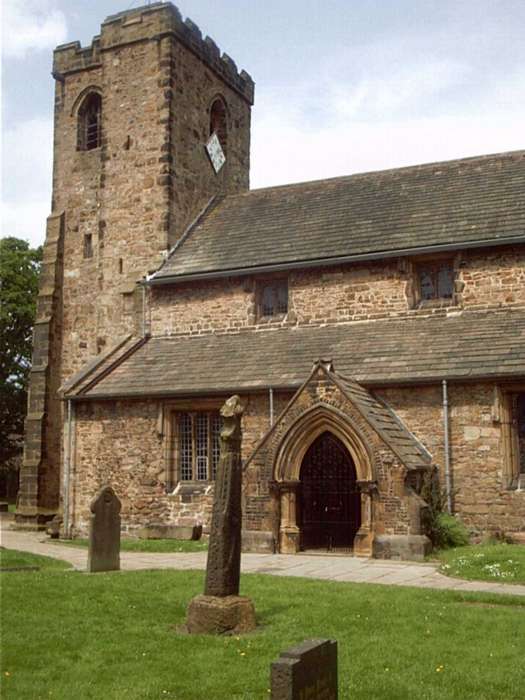
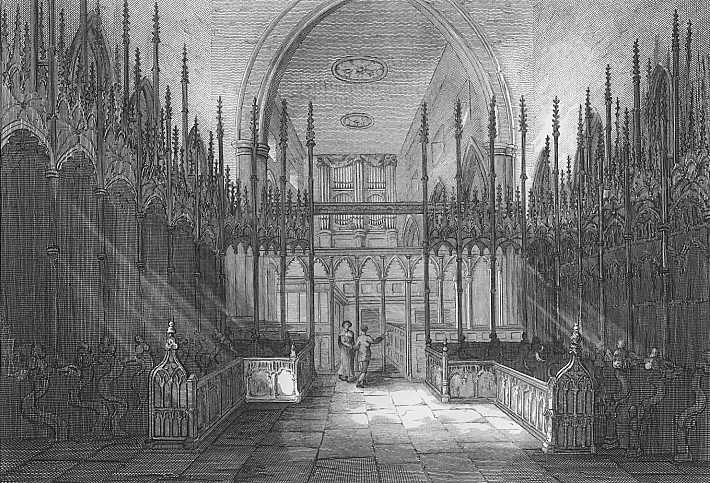
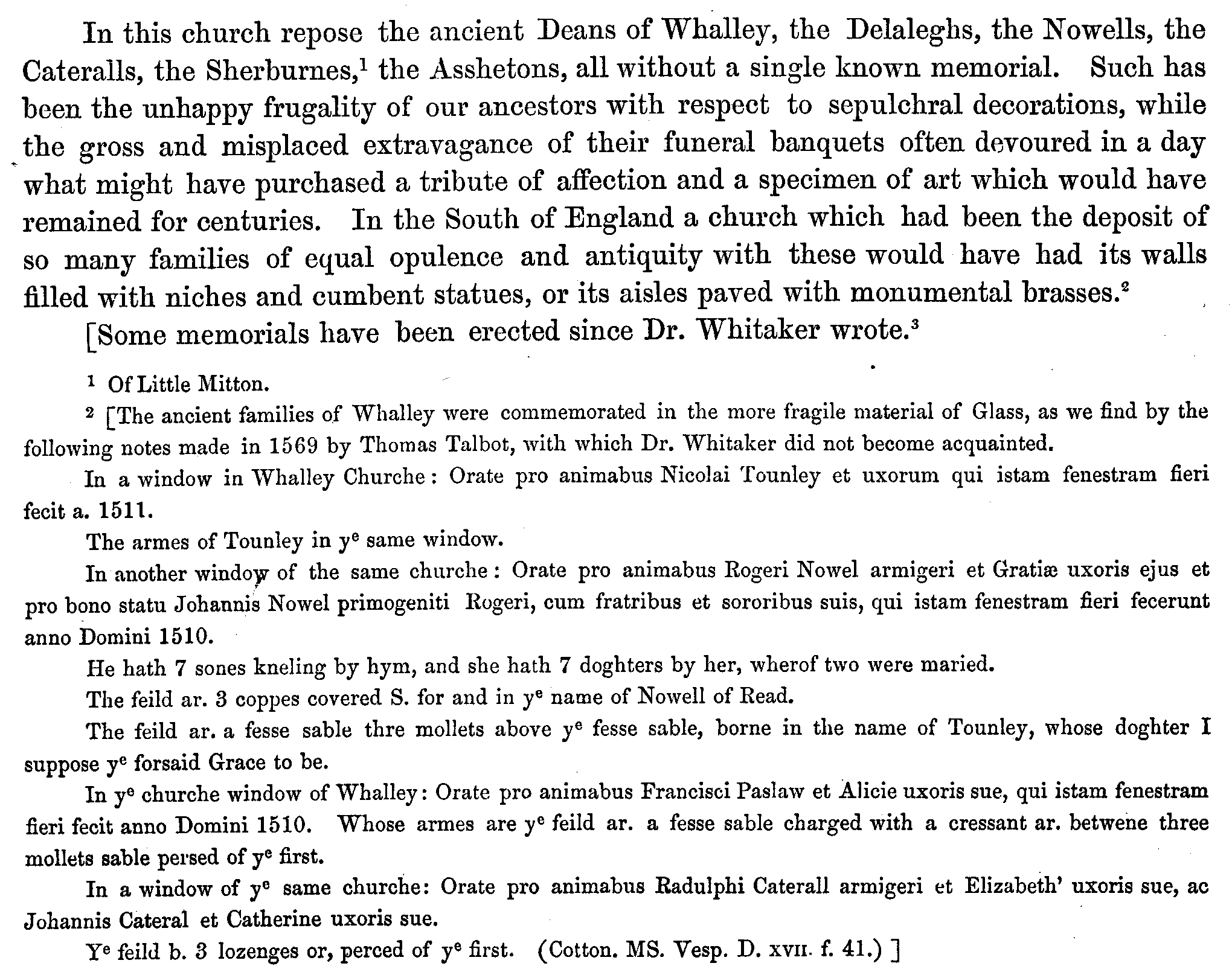
There was a church in Whalley in Saxon times before the Norman Conquest. It is referred to as the White Church under the Hill. The building would almost certainly have been constructed of wood, and 'under the hill' must refer to Pendle Hill. According to the Statutes of Blackburneshire (14th. century) the church at Whalley was founded early in the 7th. century. It was long believed that the three old stone crosses in the churchyard were of 6th. century origin and commemorated the preaching of Christianity by St. Augustine and/or Paulinus to the local population. Unfortunately the legend is probably not true, the oldest (the southernmost and tallest) of the crosses appears to be 10th. century, but exhibits many Celtic characteristics and includes a Scandinavian image 'The Dog of Berser', a symbol of eternity, adopted by Christians to represent the Creator. It is thought more likely that the crosses may commemorate a Celtic Scottish Mission from Iona. Paulinus may well have preached in the area, but in all probability, he was preaching to the converted, and more concerned with 'converting' the locals from the Celtic version of Christianity to the Roman one. In all probability the Romans were the first to introduce Christianity to the Whalley area, but after the Romans left, the Celtic Christian church became more isolated customs departed from those of the church of Rome. (Of great importance in this conflict were the method of calculating the date of Easter, and the Pelagian Heresy.)

|

|

|
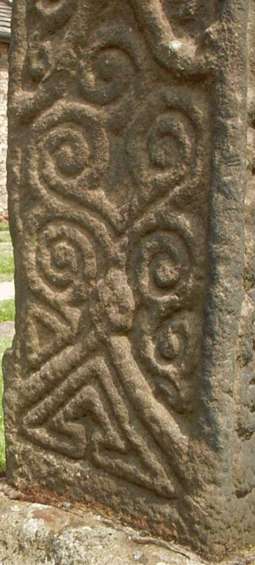
|
Celtic and Scandinavian imagery |
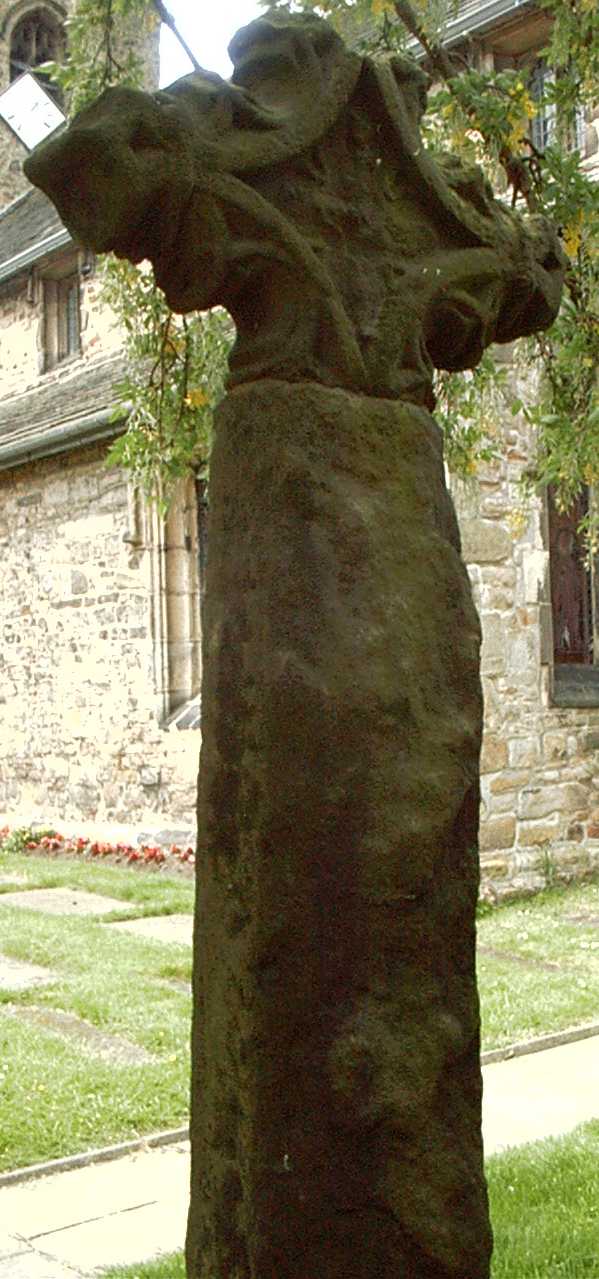
|
The Church of St. Mary at Whalley was clearly well established in Norman times, and the Domesday Survey in 1086 records that the 'church of St. Mary had in Wallei two carucates of land free of all custom'. Towards the end of the 11th. century a stone built Norman church replaced the native wood building. A few stones at the base of the main entrance (the south door) are all that remain of this original structure. The present church appears to have been built from 1200 onwards and much of the chancel structure is early 13th. century masonry. The tower (about 20 ft. square and 65 ft. high) appears to be largely 15th. century. The tower house s a complete peal of eight bells, but this is a fairly recent achievement; early in the 18th. century, there were only four bells, of which only one was fit to be rung. The bells were re-cast and increased in number to six in 1741. The last two bells were added in 1924. However, the tower does hold one very old bell from 1537, it was never part of the church peal, but came from Church Kirk in 1866. It was cast by Peter of Ghent and has the inscription 'I am Mary, cast by Peter Vaden Ghein in the year 1537.'
The interior of the church holds many old relics, including some saved from the nearby Abbey after the Dissolution.
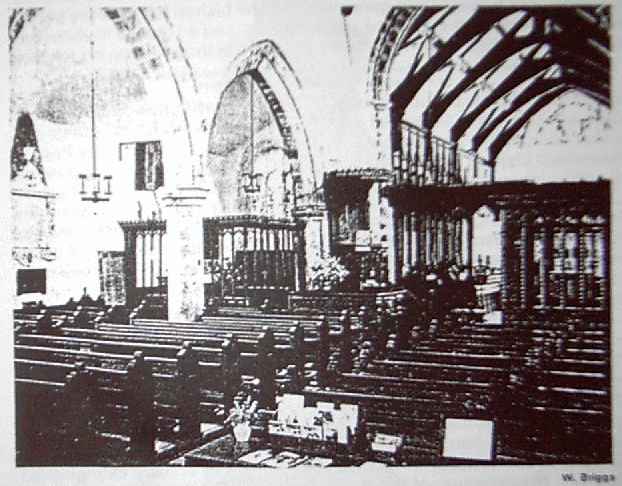
The location of the Catterall brass can be seen in the above picture as the black rectangle about half way up the lefthand side of the picture, on the north wall, in front of the Mitton Chapel. The grave of the last Abott, John Paslew, is marked by a brass plate in the floor of the aisle next to the pew against the Catterall brass. The gravestone itself has been moved to avoid undue wear and tear.
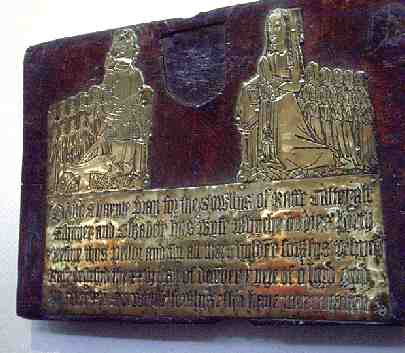
The Choir stalls were made for the Abbey about 1430, and were transferred to the church at the dissolution. The seats, which have elaborate wood carvings, are known as misericords, three of them have carved inscriptions, one in Latin, one in Norman French, and one in early English. The term misericordia (Latin for Loving Kindness) was given to these seats because when the seat is lifted, it presents a higher seat on which to rest during long periods of standing. On the south side is an interesting carving on a stall, illustrating a man attempting to 'shoe a goose'. The inscription carved is "Whoso melles him of that al men dos, let him cum hier and shoe the ghos."
The large enclosed pew on the south side of the nave is known as 'The Cage' - an old name for this type of pew. Inside is an inscription "Made by Roger Nowell Esquire, in the year of our Lord 1534". Only part of the Mediaeval Pew near the lectern remains, but this is the pew built by 'my man' Shuttleworth of Hacking for Sir John Towneley and his wife Anne Catterall. The seating in the church was determined by Sir John:
My man Shuttleworth of Hacking made this form, and here I will sit when I
come, and my cousin Nowell may make one behind me if he please and my sonne
Sherburne shall make one on the other side, and Mr Caterall another behind
him; and for the residue the use shall be, first come first speed, and that
will make the proud wives of Whalley rise betimes to come to church.
This award appears to have been made in or just before 1534. Henry Shuttleworth of Hacking ('my man') was a prominent landowner on the banks of the Ribble near Whalley, just across from Little Mitton Hall. His wife was Katherine Catterall, daughter of Ralph and Elizabeth. Sir John himself was married to Anne Catterall, another daughter of Ralph and Elizabeth, and his daughter Jane had married first Thomas Sherburne, then Ralph Shuttleworth of Hacking. Sir John's father's sister, Grace, had married Roger Nowell, and Grace Catterall, yet another daughter of Ralph and Elizabeth had married another Nowell. All very much a family affair!
It appears that this decision to keep the seating 'within the family' did not please everybody in the neighborhood, and on 1 October 1610, a later Roger Nowell, Sheriff of Lancashire, was writing a long and rambling letter to the Bishop of Chester complaining that Ralphe Assheton of Leaver was using his pew.
The two chapels in the aisles were originally chantries. In the south aisle, St. Mary's Chantry (now the Lady Chapel) was given to the Nowell family when it ceased to be a chantry at the time of the dissolution. The Nowell family of Read Hall used it as pew until the Asshetons claimed it.
In the north aisle, the St. Nicholas Chantry was founded when the hermitage was closed in 1440. The hermitage (probably located between the west end of the church and the east gate of the Abbey) was founded in 1361 to house a female recluse, with two maids and a priest to say Mass daily. The hermitage was closed 'due to the unsatisfactory conduct of the inmate' ( Isold de Heton, widow of John de Catterall), and the endowment was used to provide priests to say mass daily in the two chantries for the soul of King Henry VI and his descendants. After the dissolution of the Abbey in 1537, chnatries were abolished, but Mass continued to be said in the two chapels until 1560. The chantry in the North aisle became the Mitton chapel, that in the south aisle the Lady chapel. The Mitton chapel was originally for the use of the Catteralls and later the Sherburnes of Little Mitton Hall.
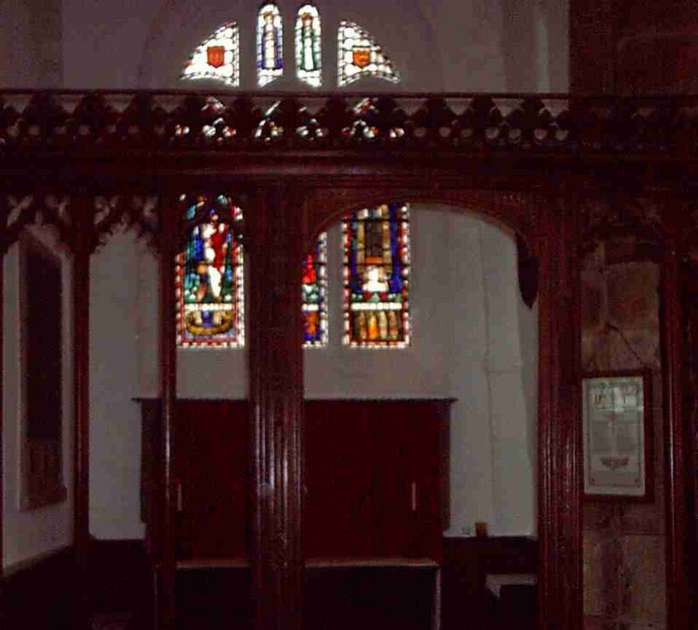
See the location of the Mitton chapel on the floor plan of the church below.
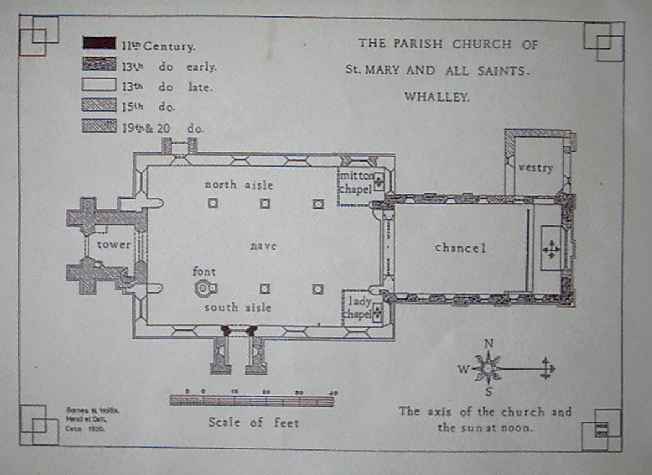
On the floor of the chapel is the tombstone of Christopher Smith, the last Prior of Whalley Abbey who was allowed to continue to say Mass in the chantry/chapel after the Dissoluions. Archdeacon Lambert wrote in "Whalley Abbey Yesterday and Today":
"Christopher Smith, Paslew's prior, was apparently given permission to be one of the chantry priests in the parish church of Whalley. Sussex wrote about him to the King from the Abbey on April 6th. He speaks of Smith as decrepit and aged, who asks that, as the Abbey is bound to keep two priests within the parish church of Whalley, the King might be pleased to grant that he be one of them and that he should receive six or seven pounds a year as his stipend. Sussex tells the King that he thinks it would be a good and charitable deed that Christopher Smith should be provided for in this way as he had been a monk at Whalley for fifty years, and being almost eighty years of age was not likely to continue much longer. Henry appeared to have raised no difficulties. Christopher Smith spent his last days in this way and was buried on 5th July 1539, in the church near the font."
His grave slab, marked X.S. is now in the floor of the Mitton chapel in the North aisle.
The Constable's seat is against the furthest west pillar of the North aisle. Formerly it stood west of the main (south) door. In the Churchwarden's accounts for 1632, "The sums of 1s. 6d. and 2s. 6d. were paid to Sergeant Taylor for whipping dogs out of the church and churchyard."
Three books are kept chained in an oak case at the west end of the north aisle: 'Jewell's Apology,' (1611 edition). Quenn Elizabeth was so pleased with it, that she ordered "a copy of the English translation should be chained in every parish church in England. "Secondly; 'Foxe's Book of Martyrs.' 1684 edition. Thirdly; 'Book of Homilies' (1623 edition.
There is an interesting stone coffin (currently empty) just to the left of the main entrance to the church.
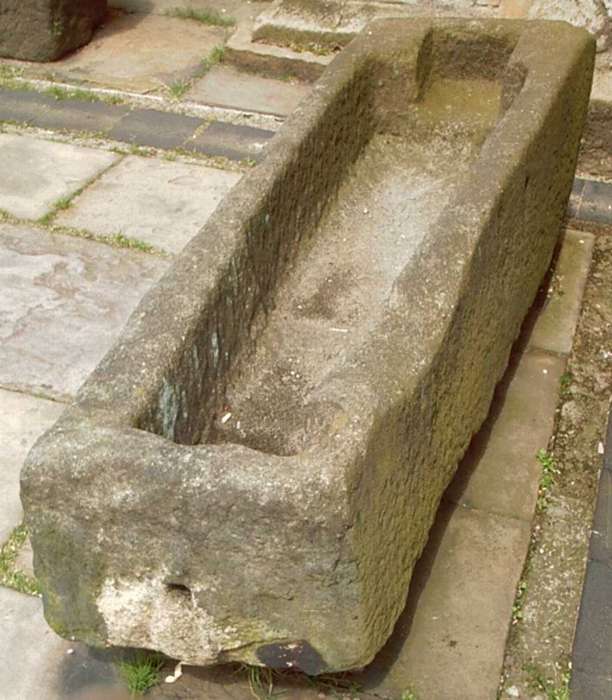
The east window was given by members of the Green family in memory of their parents and their brother Arthur, killed in 1916. It shows King Arthur, St. George and St. Nicholas and above, the arms of the County and the Abbey. (Make of this what you will.)